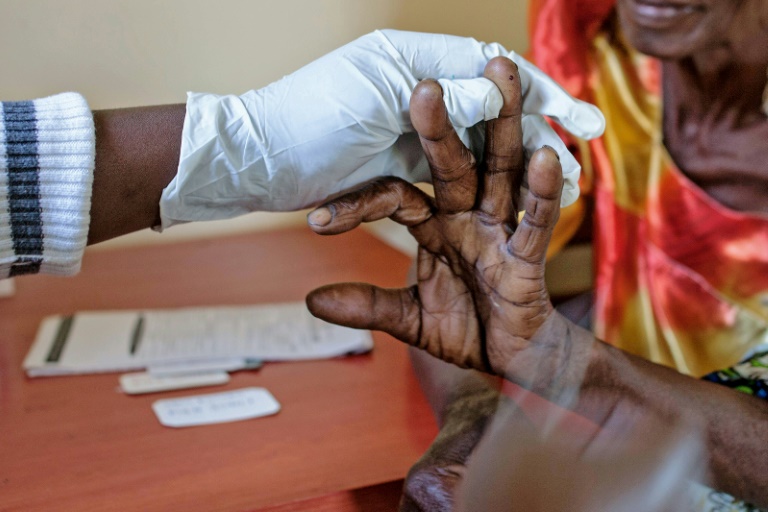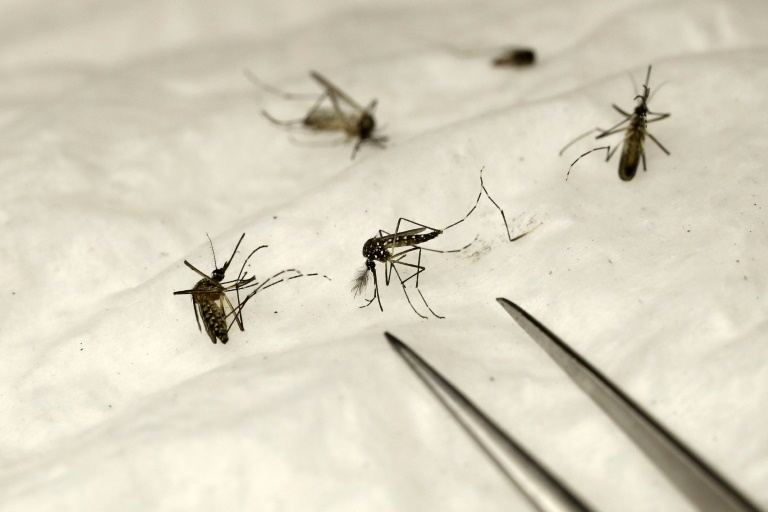A big roadside poster announces a "Pest Control Campaign" in Sao Tome and Principe, with a man in a white face mask wielding an insecticide spray fuelled by a tank on his back.
The island nation in the Gulf of Guinea is at war against malaria, as it has been twice a year since 2003, with such success that the disease no longer routinely claims lives.
In mainland central Africa, the incidence of malaria spread by infected female mosquitos is among the highest rates in the world.
Malaria killed some 445,000 people around the planet in 2016, according to the World Health Organisation (WHO), out of 216 million estimated cases that year.
“Our last death was in 2016. It was a Portuguese man who failed to take measures for prevention and treatment,” said Hamilton Nascimento, coordinator of the National Programme to Fight Paludism (PNLP) in Sao Tome.
In 2005, malaria claimed more than 5,000 lives out of about 50,000 infected people in Sao Tome and Principe, according to the WHO.
The humid tropical climate of the islands provides an ideal breeding ground for the female mosquitos that carry the parasitic infection from one person to another with their bloodsucking bites.
– National priority –
Yet since 2014, the number of deaths has fallen to none on Sao Tome, apart from the Portuguese victim. On Principe, lying to the north, malaria has been eradicated, in official terms.

Malaria killed some 445,000 people around the planet in 2016, according to the World Health Organisation (WHO), out of 216 million estimated cases that year
The government wants to wipe it out everywhere by 2025, but the WHO has warned that a sizeable part of future funding is at risk.
The battle against a once endemic disease began as a national priority in the 1980s, in the wake of independence from Portugal in 1975, Nascimento told AFP.
The islands of Sao Tome and Principe, which have a combined land surface of 1,000 square kilometres (386 square miles), benefit from their offshore location west of Gabon and from a small population of less than 200,000 inhabitants.
“We have three strategies: spraying inside houses, distributing mosquito nets impregnated (with insecticide) and the fight against larvae using a biological insecticide that we spread in stagnant waters,” Nascimento said.
The population of Sao Tome also has access to free medication to treat malaria and to testing campaigns nationwide. If a case of malaria is detected, “the hospital follows up the patient for 28 days,” he added.
“Sick people are given free care by the health centres and medicine is accessible everywhere in the country.”
For all the successes in tackling a disease that has no available vaccine and is prone to mutate, residents of the islands have begun to grow weary of the repeated campaigns.
“The number of people who open their doors to the mosquito sprayers has gone down,” Health Minister Maria Jesus Trovoada said, concerned that this refusal to take part “puts all the efforts of the government in peril”.
Authorities in Sao Tome and Principe have been clear about their desire to reduce dependence on foreign aid, which accounts for about 90 percent of the nation’s resources, and the battle with malaria is part of that goal.
At the end of the 1980s and again in 2012-2013, the disease ravaged the country because of a shortfall in funding and spreading resistance to insecticides, Hamilton said.
“We must often — about every 10 years — change the insecticide, because the mosquitos develop resistance,” he explained.
– Funding cuts? –

The humid tropical climate in Sao Tome and Principe provides an ideal breeding ground for maleria
While the government recently stepped up its contribution, the Global Fund to Fight AIDS, Tuberculosis and Malaria, a foundation partnered with the WHO, finances most measures to beat the disease on the islands.
The grant from the Global Fund may be slashed by more than 50 percent, the WHO warned in a recent report. Sao Tome and Principe would then “need more or less $5 million (4.2 million euros) between 2018 and 2021 to go on getting good results”.
“The impact of lack of funding is unknown. However, if current efforts to control malaria have to be reduced due to lack of funds a high risk of a relapse exists,” Rebekka Ott, the Global Fund representative on Sao Tome, told AFP.
The foundation is also concerned about Sao Tome’s cutting of diplomatic ties with Taiwan at the end of 2016 in order to develop relations with China. Taiwan previously paid more than 30 percent of the cost of fighting malaria.
China, whose flag has already been mounted at the National Centre for Endemics, is expected to take up the baton, but by providing “technical assistance” rather than financial aid.
Whatever the obstacles, the WHO announced in April 2016 that 21 countries in the world may eliminate malaria by 2020. Six of those nations are in Africa: Algeria, Botswana, Cape Verde, Comoros, Swaziland and South Africa.






